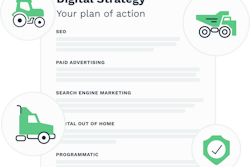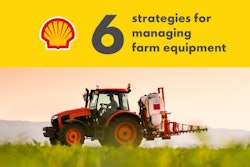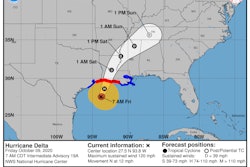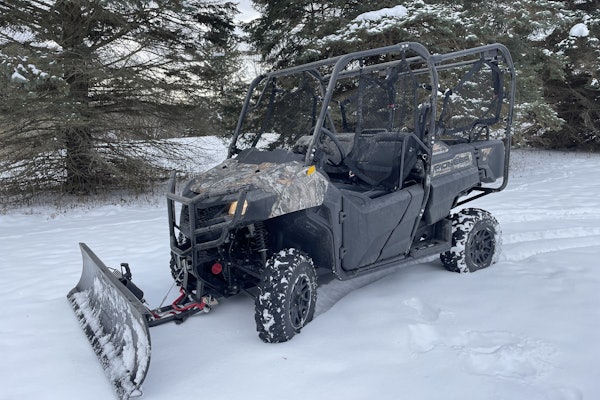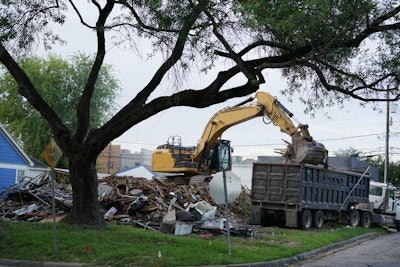
Editor's note: This story was updated June 10, 2025.
The U.S. is facing another above-average season for hurricanes in the Atlantic Ocean in 2025, according to the National Oceanic & Atmospheric Administration.
Hurricane season began June 1, and NOAA predicts 13 to 19 named storms, with winds of 39 mph or higher, before it ends November 30.
Damaging storms that make landfall in the U.S., along with other disasters such as tornadoes, floods and wildfires, will require cleanup and reconstruction in devastated communities. Being in a position to provide those services takes careful, advanced planning before a disaster strikes.
With the Trump administration calling for funding cuts and possible elimination of FEMA, uncertainty pervades on what disaster-response will look like during the next four years. The agency has lost about one-third of its employees following job cuts and buyouts. Trump has called for greater responsibility on state and local governments for disaster response.
Regardless of FEMA’s or other agencies’ roles in cleanup after a disaster, contractors interested in going to work need to be prepared – well before disaster strikes.
Florida-based government contracting consultant Karen Krymski reports she received more than 100 requests for debris cleanup and other work after Hurricanes Helene and Milton last year.
“Many small and medium-sized businesses suddenly see a ‘golden opportunity’ to make money in the 12 hours following the storm and the weeks thereafter,” she writes on the Florida APEX Accelerator website. “However, much planning needs to occur to set yourself up successfully for contracting opportunities following a disaster.”
How to Get Prepared
 A summary infographic showing hurricane season probability and numbers of named storms predicted, according to NOAA's 2025 Atlantic Hurricane Season Outlook.NOAA
A summary infographic showing hurricane season probability and numbers of named storms predicted, according to NOAA's 2025 Atlantic Hurricane Season Outlook.NOAA
There are more than 95 such centers around the country, in each state and in Puerto Rico and Guam. They are managed by the U.S. Department of Defense's Office of Small Business Programs, with federal funding matched by state and local governments and nonprofit organizations. Many of the centers are on state university or college campuses, and there are more than 300 local offices.
Their services are free, including one-on-one counseling. Services include helping to register with the proper government procurement systems, as well as finding bidding opportunities and preparing proposals.
The centers also reach out to their counterparts in other states to help businesses find opportunities there.
Federal Contracts
After contacting an APEX center and setting an appointment with a counselor, the next step involves registering with the federal government’s System for Award Management (SAM).
SAM is run by the U.S. General Services Administration, and any contractor that wants a federal contract must be registered in it. That includes performing work for FEMA or the U.S. Army Corps of Engineers, which also handles debris cleanup after disasters.
The sam.gov site has become the GSA’s primary clearinghouse for government contracting, consolidating other sites into one. It has such resources as: entity registration, disaster response registry and contract opportunities.
The free SAM registration process can be tedious, and minor errors can cause delays, such as entering a slightly different company name than is listed with the Internal Revenue Service. The IRS is linked to the system to make sure companies registering are legitimate.
Though some for-profit companies advertise they can guide businesses through the process, APEX Accelerator counselors will help businesses register at no cost.
SAM requires the following steps to register:
- Get a Unique Entity ID. This is a 12-character ID with a mix of numbers and letters. As of April 4, 2022, it replaced the DUNS number, which is no longer valid for registration.
- Prepare your data. To get the UEI, you will need these items to register: your business entity's legal name and physical address. P.O. boxes may not be used for the physical address. You may also need to provide the date and state of incorporation for the business.
- Create a login.gov user account (if you don’t already have one). You will use that login.gov username and password every time you log in to SAM.gov. It also gives you login access to such government programs as federal benefits, services and applications. It takes a few minutes to create the account.
After taking those three steps, you are ready to register on sam.gov.
During the registration process, indicate that you want to participate in the Disaster Response Registry. That way contracting officers can locate your information when performing a search of the registry.
Some SAM registrants may also be asked to provide a notarized letter to verify that the person filling out the registration represents the contractor. You will receive a request for this letter if it is required.
The process culminates in being assigned a five-character CAGE code by the Department of Defense, if you don't already have one, to identify a specific facility at a specific location. It’s required for businesses to get paid for federal contract work. It takes about 10 to 15 days to become registered with SAM after submitting your information, according to its website, and another 24 to 48 hours for your registration information to be available in other federal systems.
There are other databases for federal contracts under $25,000 that APEX Accelerators will also help businesses register for and will monitor for them.
State and Local Contracts
One thing contractors should be aware of is that FEMA is required under federal law to contract with businesses located in affected areas when “feasible and practicable.” That can make it more difficult for contractors outside of the disaster area to win contracts, and all the more reason it pays to make plans before a disaster strikes.
Many states have their own contracting and procurement systems, which contractors will want to register for. Again, APEX can help by contacting the APEX Accelerator in the state where the contractor wants to work to find out what steps are required there.
Krymski, with Florida APEX Accelerator, writes that even though CAGE is primarily for federal contracts, they are often used by state and local governments, as well prime contractors, for an initial evaluation of your company’s readiness.
She notes that contracting often begins with counties requesting funding from their state governments, and many of those entities have already negotiated contracts in place with disaster cleanup contractors. Many of these contractors have website forms that construction companies interested in cleanup work can apply for sub positions.
She also provides the following warning:
“A cautionary note – several private government consulting firms will attempt to sell you a list of companies for marketing your services, charging upwards of $1,000 for the list(s). Please do not do this. I have had clients in the past who have purchased the list, called everyone, and were rewarded with nothing.”

